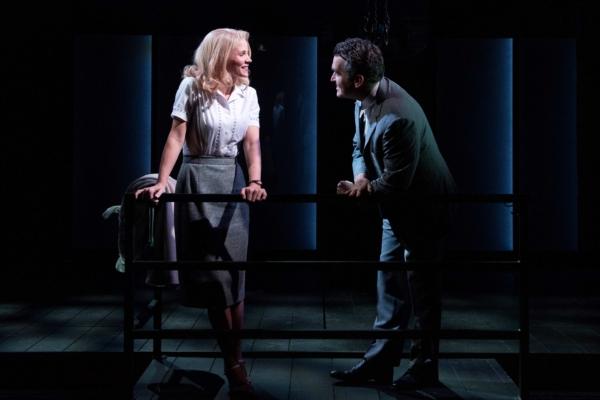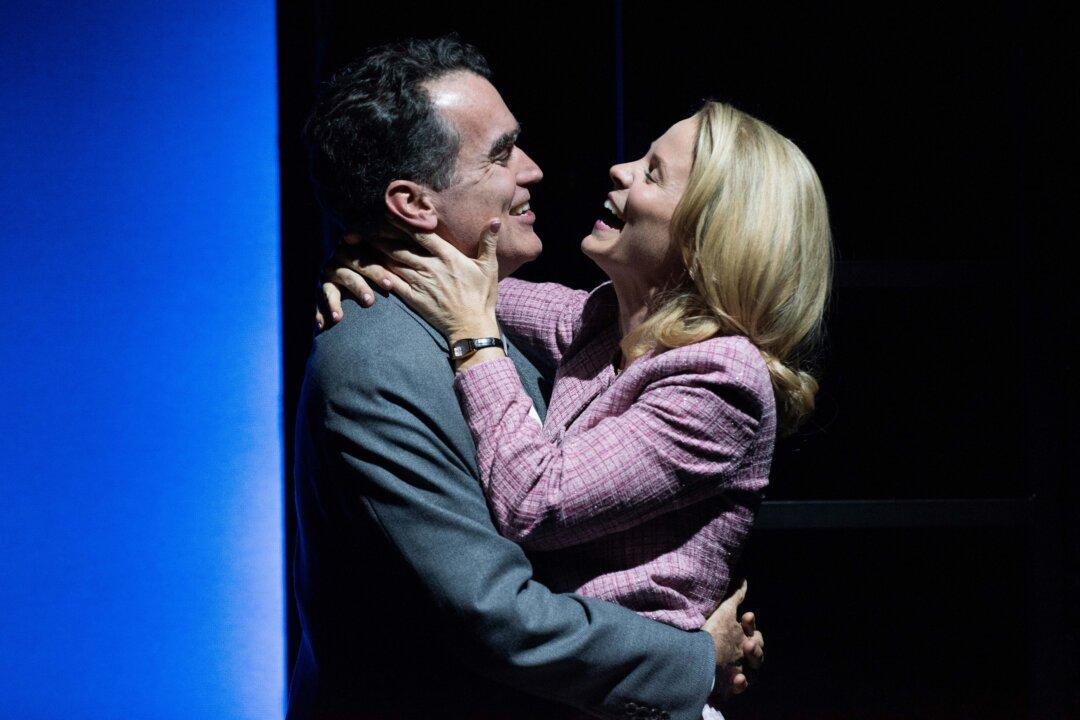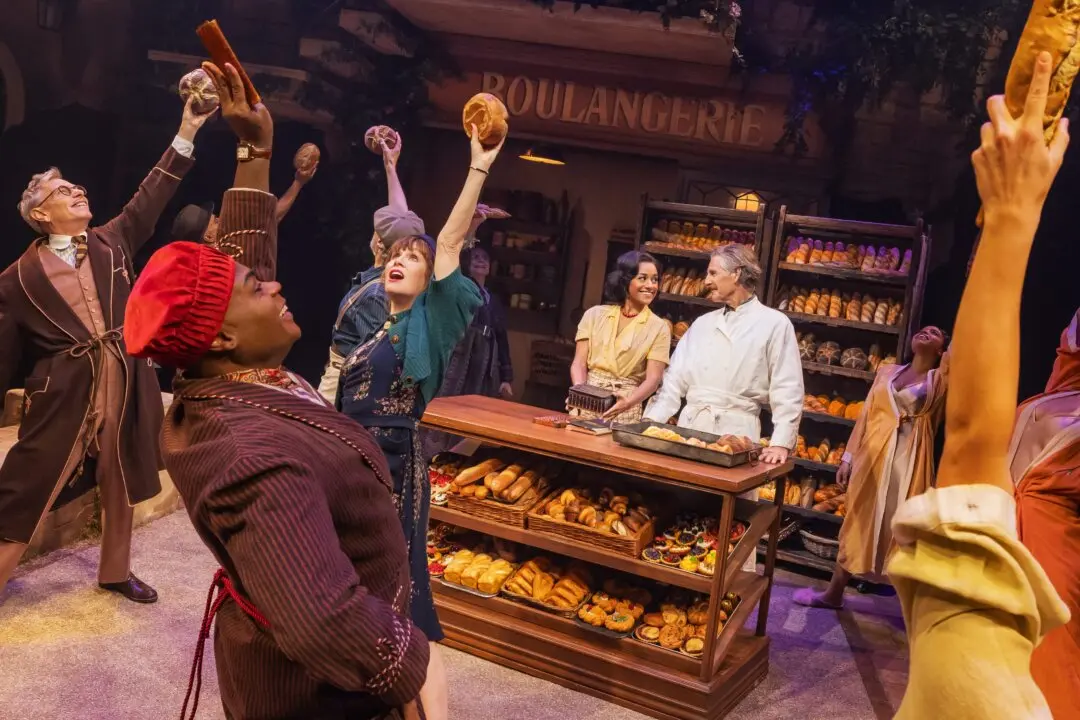NEW YORK—“Days of Wine and Roses,” a 1962 film about the descent into alcoholism and what comes after, doesn’t seem a likely candidate for a stage musical. Yet bookwriter Craig Lucas and composer Adam Guettel have taken its core elements and turned it into something fresh and involving, with two powerhouse performances at its center.
Drinking in the Big City
The story opens at a company schmooze fest for clients in 1950 New York City, where public relations man Joe Clay (Brian D‘Arcy James) is in his element. Joe has a gift for making people feel completely at ease thanks to his outgoing manner, supply of endless jokes, and a constant drink in his hand. Though to his surprise, he finds co-worker Kirsten Arnesen (Kelli O’Hara) not interested in this well-oiled approach.
Kirsten (Kelli O’Hara) and Joe (Brian d’Arcy James), in "Days of Wine and Roses." Ahron R. Foster





